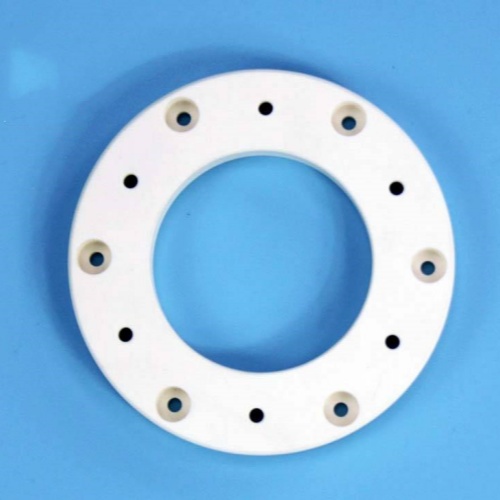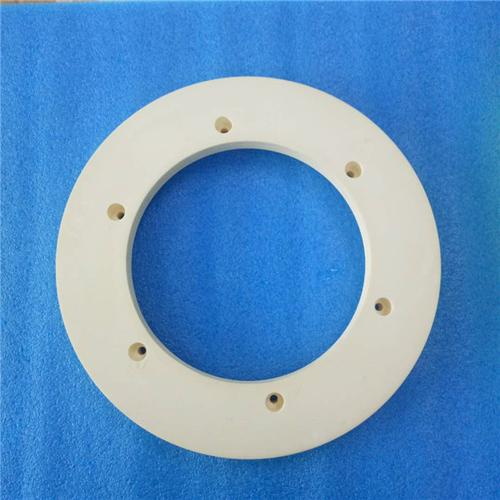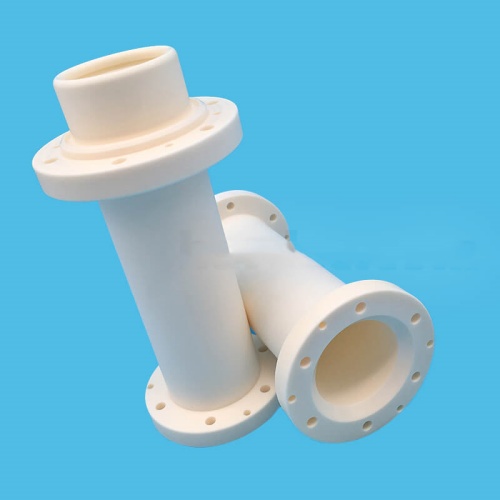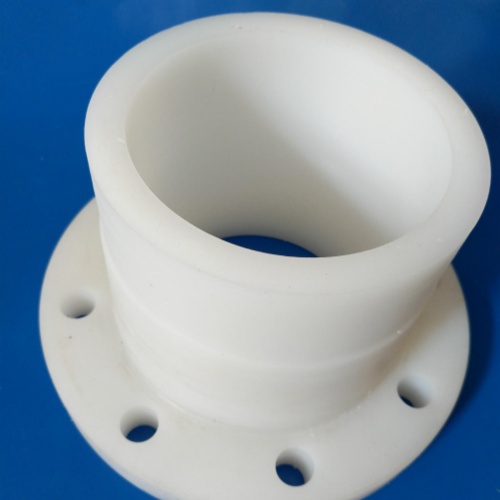How do ceramic flanges perform in extreme temperatures
Material Properties of Ceramic Flanges
Ceramic flanges are usually made of high-performance ceramic materials such as silicon nitride ceramics, zirconia ceramics, etc. These materials have unique crystal structures and excellent physicochemical properties that make them perform well at extreme temperatures.
- High melting point: The melting point of silicon nitride ceramics exceeds 1600 ° C, and the melting point of zirconia ceramics is as high as 2700 ° C. This allows the ceramic flange to maintain structural integrity in high temperature environments without softening or melting like traditional metal materials.
- Oxidation resistance: Silicon nitride ceramics can form a dense silicon oxide film in a high-temperature oxidizing environment, preventing further penetration of oxygen, thus protecting the material from oxidative damage. Zirconia ceramics also have excellent oxidation resistance and remain stable even at extreme temperatures.
Low thermal expansion coefficient: The thermal expansion coefficient of silicon nitride ceramics is only 1/4 that of metals, which means that the size of the ceramic flange changes less when the temperature changes, which can effectively reduce the stress concentration and deformation caused by thermal expansion and contraction.

The performance of ceramic flanges at extreme temperatures
In extremely high temperatures, ceramic flanges can maintain stable physical and chemical properties.
- Mechanical strength: Silicon nitride ceramic flanges can maintain good mechanical strength even at high temperatures of thousands of degrees. For example, in a nuclear reactor primary loop flange system, the ceramic flange has a sealing leakage rate of less than 0.01 g/h in a high-pressure water environment of 350 ° C/15.5 MPa.
- Sealing performance: Ceramic flanges can maintain good sealing performance at high temperatures. For example, in the hydrogen-oxygen pipeline of aerospace engines, ceramic flanges can move less than 5 microns at the sealing interface under extreme conditions of liquid hydrogen environment at -253 ° C and gas impact at 1600 ° C.
- Thermal shock resistance: Ceramic flanges have excellent thermal shock resistance. For example, silicon nitride ceramics retain more than 95% of their residual strength after 100 cycles of rapid cooling and rapid heating at Delta T = 800 ° C.

The performance of ceramic flanges at extremely low temperatures
Ceramic flanges not only perform well in high-temperature environments, but also maintain good performance in extremely low-temperature environments.
- Low temperature sealing: In the hydrogen and oxygen pipeline of the aerospace engine, the ceramic flange has a sealing interface displacement of less than 5 microns in the liquid hydrogen environment of -253 ° C. This shows that the ceramic flange can still maintain good sealing performance at extreme low temperatures.
- Low temperature strength: Ceramic materials do not become brittle like metals at low temperatures, but can maintain high strength and toughness. For example, silicon nitride ceramics can still maintain high mechanical strength in low temperature environments.

Connection technology of ceramic flanges
In order to ensure the reliability of ceramic flanges at extreme temperatures, joining technology is also crucial.
- Active brazing technology: By using Ag-Cu-Ti active solder, a good connection between ceramics and metals can be achieved. For example, in the connection of silicon nitride ceramics to metals, the Ag-27.5Cu-4.5Ti (wt.%) system is used, and the liquid phase line temperature is 850 ° C, which can form a continuous TiN/TiSi 2O reaction layer.
Solid-phase diffusion welding process: a special process developed for the full life cycle of nuclear power pipelines, capable of firmly connecting ceramics and metals at high temperatures.
Laser cladding welding innovation: using 3 kW fiber laser to achieve local cladding welding, which can effectively control the depth of the molten pool and improve the airtightness and high temperature creep life of the welded joint.

Application field
The excellent properties of ceramic flanges make them widely used in many fields.
Aerospace: used in the manufacture of critical structures such as engine components and thermal protection systems, capable of withstanding extreme high and low temperatures.
Nuclear industry: In nuclear reactors, ceramic flanges ensure the tightness and safety of the system.
Chemical industry: used in high-temperature reactors, pipelines and other key components, capable of resisting high-temperature corrosion.
Ceramic flanges perform well in extreme temperature environments due to their high melting point, oxidation resistance, low coefficient of thermal expansion, and excellent thermal shock resistance. Whether it is high or low temperature, ceramic flanges maintain stable physical and chemical properties, ensuring system reliability and safety.
PREVIOUS:How to check the quality of zirconia ceramic workpieces
CATEGORIES
LATEST NEWS
- Petrochemical ceramic injec...
- Zirconia Ceramic Rod Custom...
- High-temperature resistance...
- What is the wear resistance...
- What is the hardness of cer...
- Aluminum oxide ceramic cust...
- What are the main aspects o...
- What are the mechanical pro...
- Thermal properties of zirco...
- What properties should be c...
